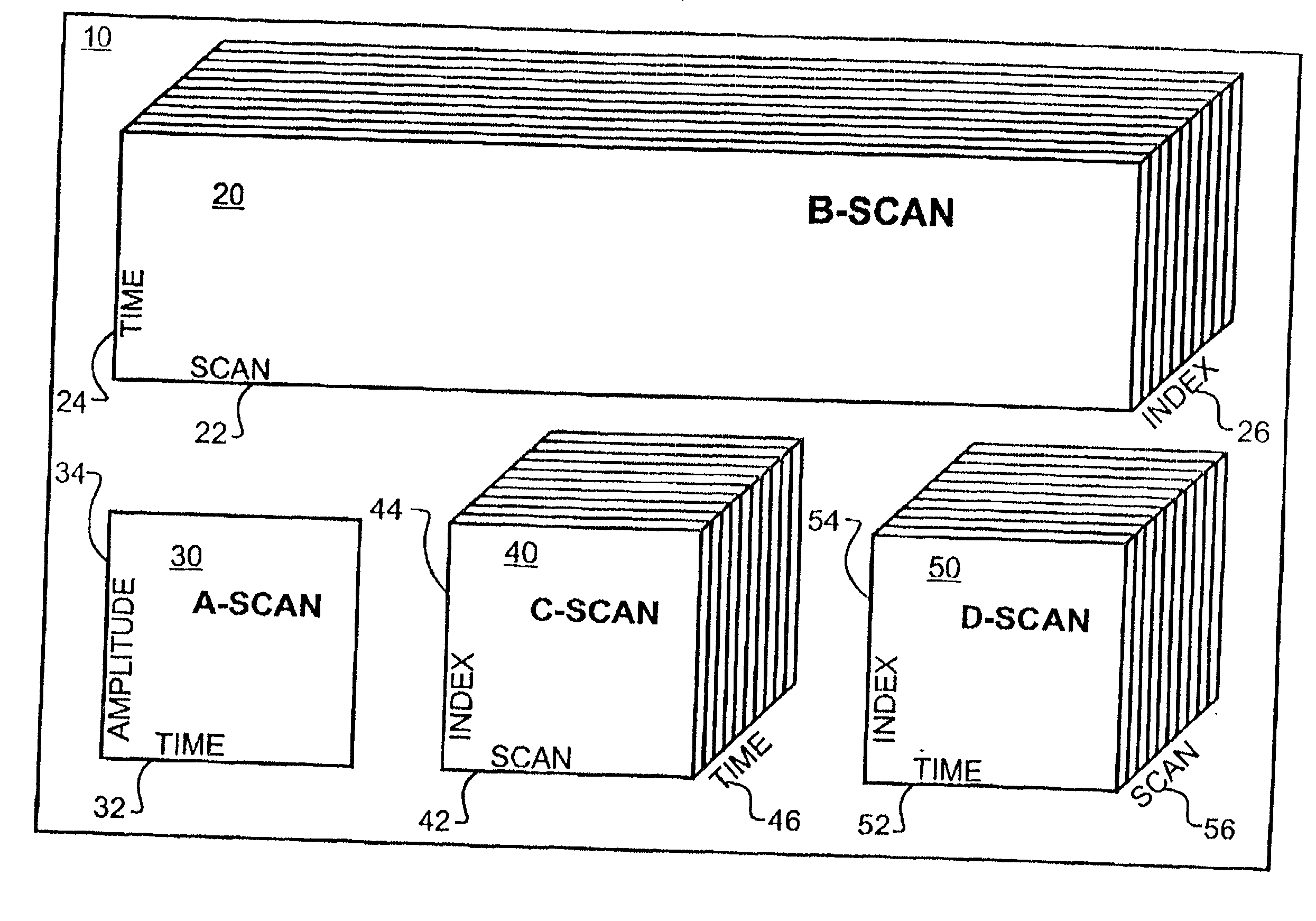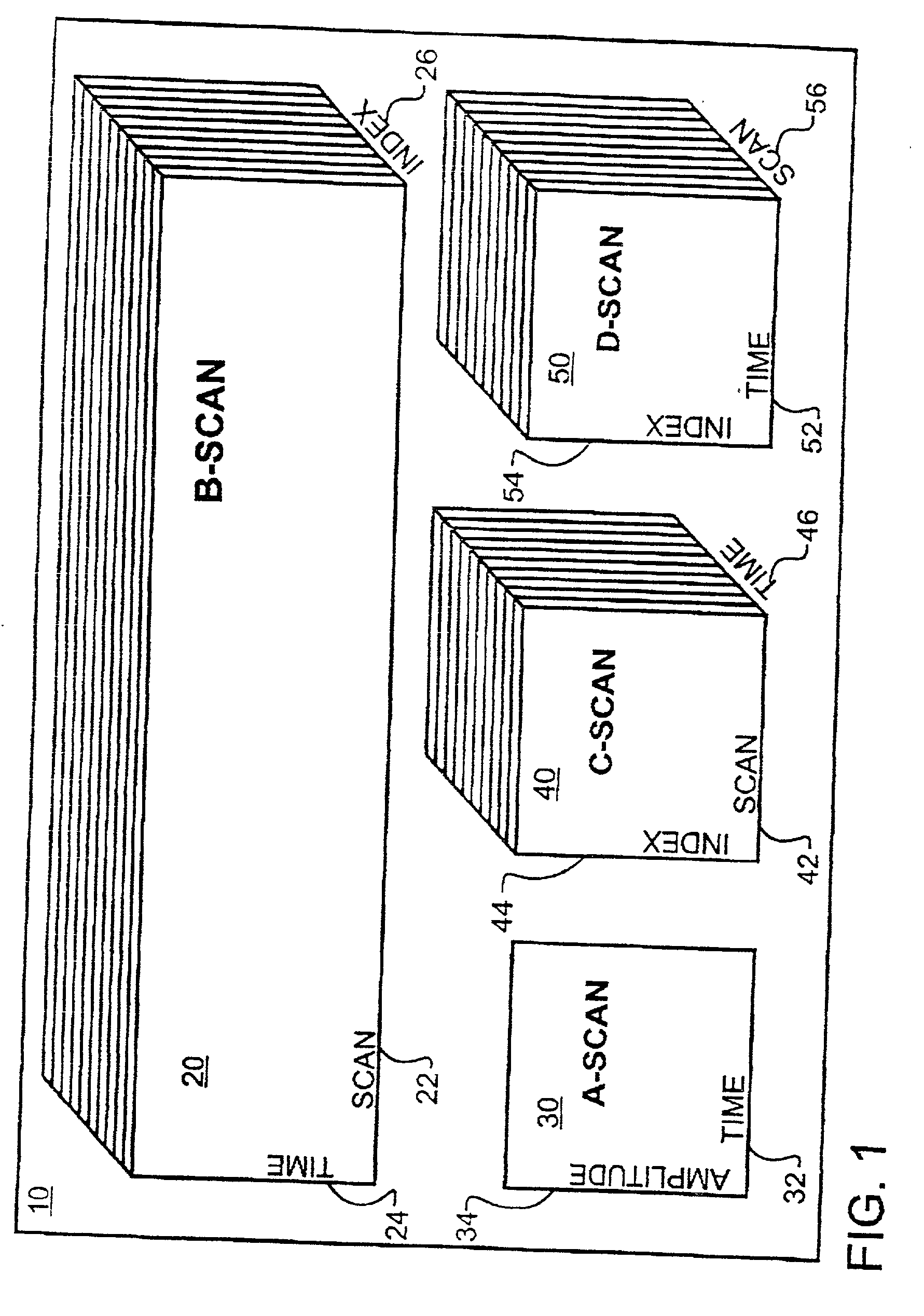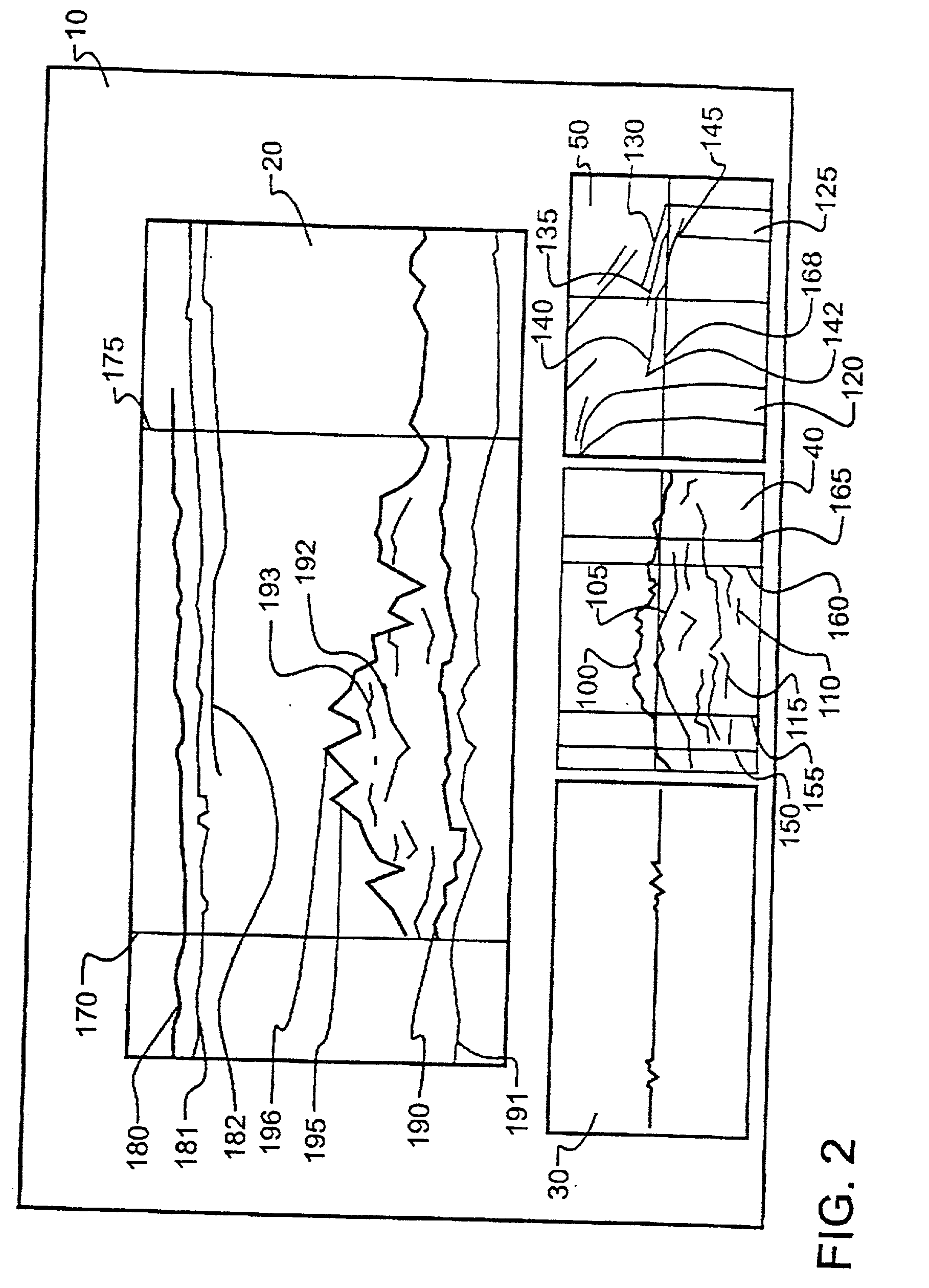Method for sizing surface breaking discontinuities with ultrasonic imaging
a surface breaking and discontinuity technology, applied in the field of non-destructive testing of materials, can solve the problems of not working as well as still desired, radioactive contamination, and all discontinuities are actually detrimental to continued operation, so as to reduce the time required, reduce the amount of extraneous information, and reduce the adverse effects of background nois
- Summary
- Abstract
- Description
- Claims
- Application Information
AI Technical Summary
Benefits of technology
Problems solved by technology
Method used
Image
Examples
Embodiment Construction
[0043] An Inconel tube having a 7 / 8" diameter, an 0.050" wall thickness, and a circumferential ODSCC of known size was scanned, using the circumferential direction as scan reference, and the length of the tube as the index reference. Ultrasonic RF data was collected from the tube using a 15 MHz forty-five degree focused search unit. The time gate used for production of the C-scan was adjusted to encompass the outside surface of the tube, and the results are illustrated in C-scan 40 of FIG. 2. Next, the index gates were adjusted in C-scan 40 to encompass the ODSCC, to produce a D-scan composite image 50 that presented the corner and associated tip signals for the entire ODSCC. An estimate was made, at that time, from the image displayed by D-scan 50, of the maximum overall depth of the ODSCC. The ODSCC was then profiled in B-scan 20 by moving index gate 168 into and through the entire ODSCC signal presented in D-scan 50. The maximum initial positive mode location of the tip signal an...
PUM
| Property | Measurement | Unit |
|---|---|---|
| threshold | aaaaa | aaaaa |
| threshold | aaaaa | aaaaa |
| ultrasonic echo | aaaaa | aaaaa |
Abstract
Description
Claims
Application Information
 Login to View More
Login to View More - R&D
- Intellectual Property
- Life Sciences
- Materials
- Tech Scout
- Unparalleled Data Quality
- Higher Quality Content
- 60% Fewer Hallucinations
Browse by: Latest US Patents, China's latest patents, Technical Efficacy Thesaurus, Application Domain, Technology Topic, Popular Technical Reports.
© 2025 PatSnap. All rights reserved.Legal|Privacy policy|Modern Slavery Act Transparency Statement|Sitemap|About US| Contact US: help@patsnap.com



